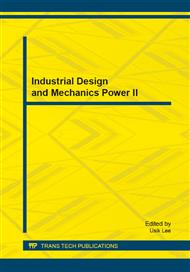p.362
p.366
p.373
p.377
p.382
p.388
p.394
p.399
p.404
The Design and Kinematic Simulation of the Return System in Ball Screw Pairs Used in Special Circumstance
Abstract:
Base on analyzing the design demand of the return system in the ball screws, combining the sine curve and the quintic parabola curve, this paper introduces a new type of curve for steel balls used in heavy load bearings. By computing and programming in Matlab, this paper gets the sine-quintic parabola curve and conducts the kinematic simulation based on it. The results show that the balls can get in and out of the return system continuously and cause low impulse force on the return system. The highest impulse force happens when the balls access the return system. All this results can contribute for the later design and research of the internal circulation return system.
Info:
Periodical:
Pages:
382-387
Citation:
Online since:
October 2013
Authors:
Price:
Сopyright:
© 2013 Trans Tech Publications Ltd. All Rights Reserved
Share:
Citation:


